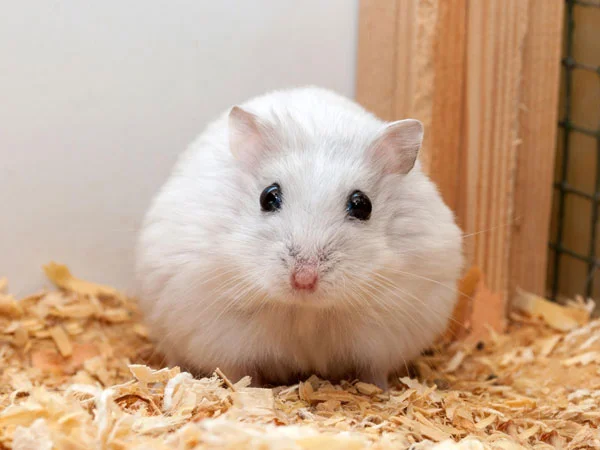The Winter White Hamster, scientifically known as Phodopus sungorus, is a small rodent species belonging to the family Cricetidae. Also referred to as the Djungarian Hamster or Siberian Hamster, it is native to the grasslands and semi-desert regions of Central Asia, particularly in Siberia and Mongolia. Renowned for its compact size, distinctive coloration, and charming demeanor, the Winter White Hamster has become a popular choice as a pet and subject of scientific research.
Physical Characteristics:
Winter White Hamsters are characterized by their small size, typically measuring around 3 to 4 inches in length and weighing between 1 to 2 ounces when fully grown. They have short, stocky bodies, rounded ears, and relatively short tails. Their fur can change color seasonally, turning white in winter to blend in with the snowy landscape and darker in summer.
Habitat and Distribution:
In the wild, Winter White Hamsters inhabit a range of habitats, including grasslands, steppes, and scrublands, where they construct elaborate burrow systems for shelter and nesting. They are well adapted to cold climates and can withstand sub-zero temperatures by entering a state of hibernation during the winter months.
Behavior and Social Structure:
Winter White Hamsters are social animals that typically live in small family groups in the wild, consisting of a dominant breeding pair and their offspring. However, they can also be territorial and may exhibit aggression towards unfamiliar hamsters. In captivity, they are best kept alone or in same-sex pairs to prevent conflicts.
Diet and Nutrition:
Winter White Hamsters are omnivorous, feeding on a variety of seeds, grains, insects, and vegetation in the wild. In captivity, they require a balanced diet consisting of commercial hamster pellets, fresh fruits, vegetables, and occasional treats such as nuts and mealworms. Fresh water should always be available.
Reproduction and Life Cycle:
Female Winter White Hamsters have a gestation period of around 18 to 21 days, after which they give birth to litters typically ranging from 4 to 8 pups. The mother is solely responsible for caring for the young, nursing them until they are weaned at around 3 to 4 weeks of age. Winter White Hamsters reach sexual maturity at around 4 to 5 weeks old.
Health and Care:
Proper care and maintenance are essential for the health and well-being of Winter White Hamsters. They require a spacious cage with plenty of bedding material for burrowing, regular cleaning to maintain hygiene, and opportunities for exercise and enrichment. Regular veterinary check-ups and a balanced diet are also crucial for ensuring their health and longevity.
Conclusion:
The Winter White Hamster is a delightful and charming companion pet known for its endearing personality and unique seasonal coloration. Whether kept for companionship or scientific research, these small rodents bring joy and companionship to countless households worldwide. With proper care and attention, Winter White Hamsters can live happy, healthy lives as beloved members of the family.

